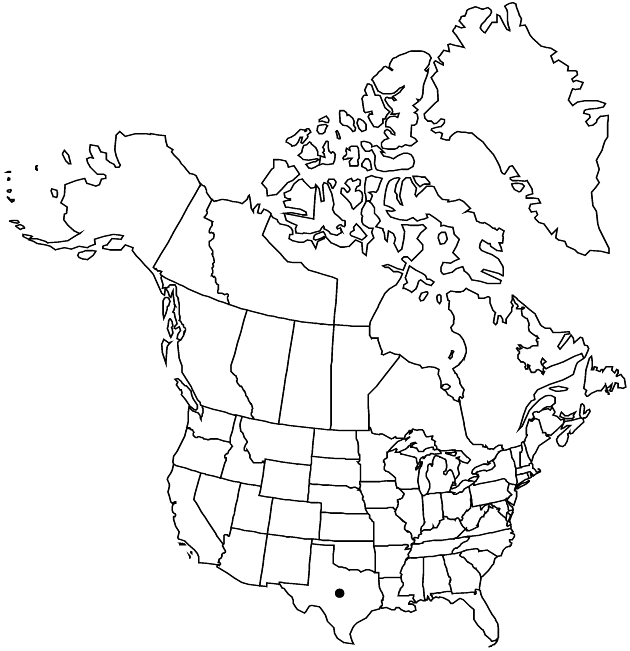Thymophylla tephroleuca
Sida 11: 378. 1986.
Subshrubs or shrubs, ashy white, 10–30 cm, lanate to tomentose. Stems erect. Leaves all or mostly alternate; blades not lobed, linear to filiform, 10–15 × 0.3–1 mm, margins usually entire, sometimes 3-fid distally. Peduncles 10–30 mm, tomentose. Calyculi of 3–4 linear bractlets, lengths 1/2+ phyllaries. Involucres campanulate, 5–7 mm. Phyllaries 12–13, margins of outer distinct less than 1/4 their lengths, abaxial faces tomentose. Ray florets 12–13; corollas golden yellow, laminae 6–8 × 3–4 mm. Disc florets ca. 30; corollas yellow, 4.5–5 mm. Cypselae 3–4 mm; pappi of 10–11 subequal scales 4–5 mm (each 3–5-aristate). 2n = 16.
Phenology: Flowering early spring and late summer, following rains.
Habitat: Light, sandy soils
Elevation: 50–100 m
Discussion
Of conservation concern.
Thymophylla tephroleuca probably grows also in adjacent Mexico. It is in the Center for Plant Conservation’s National Collection of Endangered Plants.
Selected References
None.
